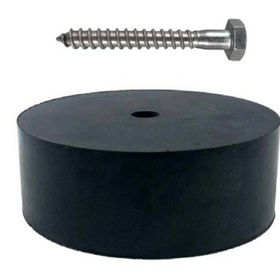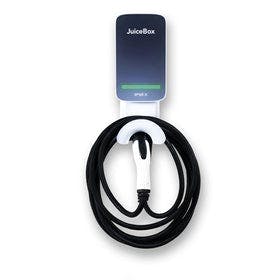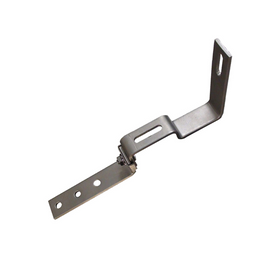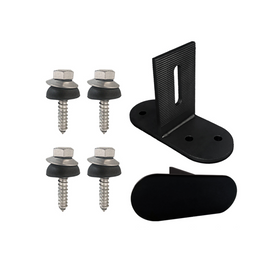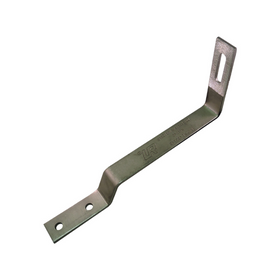
What “Electrification” of the Economy Really Means for Homeowners
Last Updated: Feb 20, 2025Clean energy and environmental advocacy organizations believe the fastest and best way to drive down carbon emissions is by electrifying the economy.
Benefits of Going Electric
And many utilities agree. Minnesota’s Great River Energy, a transmission and generation cooperative with 28 members, held a meeting in December called “Electrify Minnesota” that drew more than 100 advocates. The event focused on “beneficial electrification” that does four things:
- It saves consumers money over the long term,
- Benefits the environment by reducing pollution
- Reduces greenhouse gas emissions, and
- Improves the overall efficiency of the grid.
The pitch for going electric is intensifying as utilities rely more and more on renewable energy and natural gas-fueled generation and as cities and states commit to reducing greenhouse gas emissions.
But what will electrification mean for the average homeowner? What technology is available to electrify a home and reduce energy consumption? Can an existing home be electrified?
Much of the electrification of homes can be incorporated into current homes and the design of new ones. Ideally, homeowners would be driving electric cars and have solar if their rooftops have the potential.
Beyond those two more obvious strategies are technologies available for homes that could replace all or some natural gas used for heating.
Electric Heating
Let’s start with heating, a significant cost for homes. Natural gas has been the go-to power source for heating homes in much of the Midwest for generations. Clean energy advocates believe that homes will have to be warmed by electricity instead of natural gas to achieve carbon reduction goals.
The Rocky Mountain Institute’s report on the economics of electrifying buildings found that “Reaching ‘deep decarbonization’ goals of 75 percent or greater reduction in greenhouse gas emissions will require eliminating most of the carbon dioxide (CO2) produced by furnaces and water heaters across the country, alongside other measures across the economy. Further, electric space and water heating can be intelligently managed to shift energy consumption in time, aiding the cost-effective integration of large amounts of renewable energy onto the grid.”
The report said that the switch could save money for people in new homes and, in some cases, do the same for homeowners doing retrofits. Electric heating technologies also work for air conditioning, removing the need for two appliances.
However, the report warned that the cost of retrofitting in cold climates could be expensive. “Customers with existing gas service face higher up-front costs to retrofit to electric space and water heating than to install new gas devices, and either pay more for energy with electric devices—generally in colder climates—or save too little in energy costs to make up the additional capital cost,” the report stated.
The options for electric heating are many. One highlighted by a recent Minnesota Department of Commerce report suggests a “cold climate ductless mini-split air source heat pump.” What’s that, you ask?
A ductless mini-split heat pump would work primarily in households using electric resistance baseboards as their primary heating source. The heat from outside the home is transferred inside through a vapor-compression cycle commonly found in air conditioners and refrigerators.
By moving heat, these systems can produce more heat energy than a home requires, as much as four times more. Still, they perform less efficiently at minus 10 degrees or less. The Commerce Department report suggests homeowners and apartment dwellers can then use baseboard heating as a supplement.
The great thing about air source heat pumps is that they can air condition rooms, too. They run more efficiently than typical air conditioners, although it may take more than one unit to cool an entire home.
Another option is the uber version of the air source heat pump, which can replace an electric furnace. It works the same way yet takes care of heating and cooling a whole house.
Commerce suggests the technology could save 50 percent over a typical natural gas heating system. However, it comes with a caveat: a backup heating source may be needed in harsh winter climates. For homes in warmer regions, there’s less of a need for a backup of any sort.
Another heating option is a geothermal heat pump, which exchanges heat with the ground rather than the air. Geothermal works well in more extreme climates because the ground temperature remains moderate, around 50 degrees Fahrenheit/10 degrees Celsius, even on the coldest days. For now, geothermal remains too expensive for many homeowners wanting to renovate because deep drilling into a yard is required, as well as underground equipment. For new construction, geothermal is more doable. It’s always good to ask your contractor and price it out, as innovations might make it more affordable.
Electric water heaters are another area where homeowners can gain cost savings and reduce consumption. A national movement has emerged to transition homeowners to oversized electric heaters that can be heated by electricity overnight and then shut off during the day.
Great River Energy, for example, has more than 50,000 customers on its hot water heater program. The utility buys a great deal of wind power, and the wind blows hardest at night. Wind and other sources produce electricity that warms water heaters from 11 p.m. to 7 a.m. The heaters are oversized, so enough hot water is available throughout the day and night for bathing, dishes, and other activities.
The utility does not have to draw as much energy when customers return from work and begin using hot water again by shutting off the heaters during the day. And customers get a break on their bills by enrolling in the water heater program.
If your utility does not offer a special program, another option is a tankless electric water heater. Also known as “instant” or “on-demand” water heaters, these heaters only heat water when you turn on the tap. They are an excellent option for people who are retrofitting a home and don’t want to add piping and air vents, both requirements of gas heaters.
More Electric Ideas
Commerce has other ideas for home improvements. One is simple: a Wi-Fi-enabled thermostat. What to look for? Tier 3 thermostats offer Wi-Fi connectivity; Tier 1 and 2 models do not. Users can change the temperature from work or wherever and warm their homes before they arrive. This saves energy because the house does not need to be heated to room temperature while it is vacant.
Another new technology, more common in office buildings, is coming to a home near you soon: smart lighting or network-controlled lighting. The first step is replacing all lighting with LEDs. The second is to add wireless sensors to the room: the lights go out when people leave. Smart lighting automatically adjusts for daylighting. If the sun is shining in the kitchen and you still need lights on to prepare and cook meals, the interior lighting would adjust based on the flow of natural light from outside.
Advanced power strips incorporate advanced analytics to achieve energy savings by turning off devices not in use. Cable boxes, televisions, and other electronic equipment would turn off when not used overnight or during the day.
These “tier 2” power strips can reduce plug loads—electricity powering devices not being used—by 30 percent. Plug load is a big deal in energy circles because of the many appliances that suck energy even when not in use. Two-thirds of California’s residential energy use is plug load, more than heating or cooling. Using strategies to reduce plug load will save on energy bills and energy consumption.
Bottom Line
Total electrification of the economy is likely decades off, even as cities and states commit to zero carbon emissions by 2030 (see Sierra Club’s 2018 Case Study Report: Cities are Ready for 100% Clean Energy). Yet, the technology continues to improve and decline in price. New homes will likely have electric air pumps because they save money over purchasing heating and cooling separately. As electric utilities increasingly rely on renewable energy, the push to electrify homes will grow. The future belongs to electricity. And at Rise, we believe this transformation to a clean energy economy is our moonshot.
Table of Contents
Frank Jossi
Based in St. Paul, Frank Jossi is a journalist, editor and content strategist. He covers clean energy in Minnesota for Midwest Energy News and writes frequently for Finance & Commerce. His work has appeared in more than 70 local, national and international publications.




